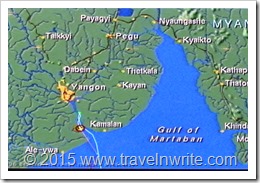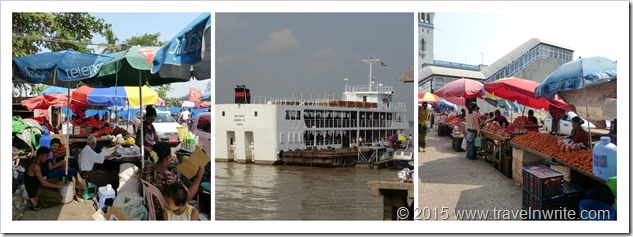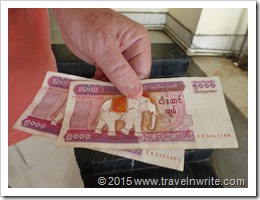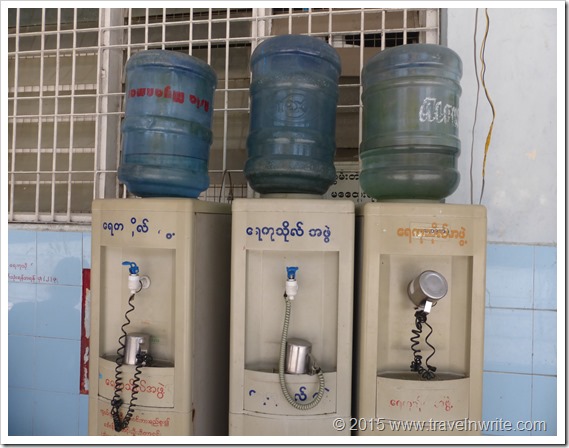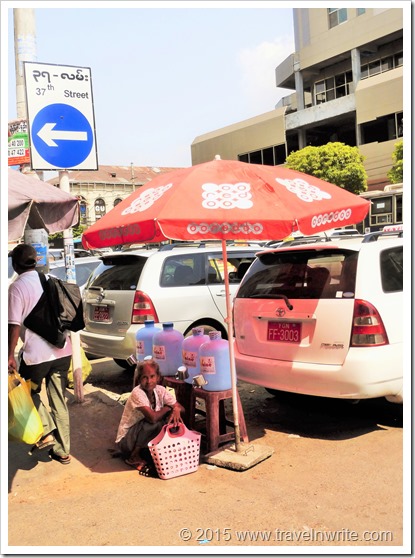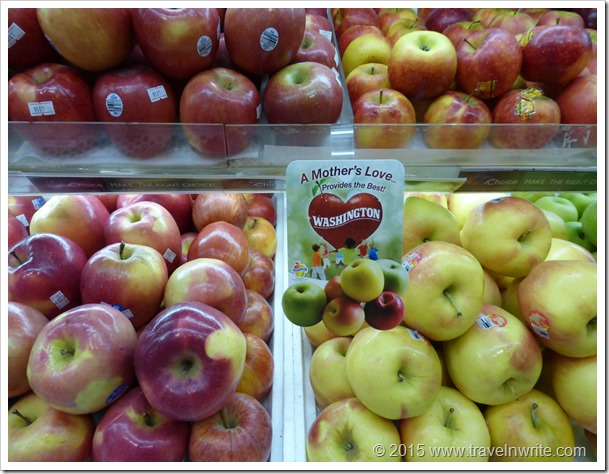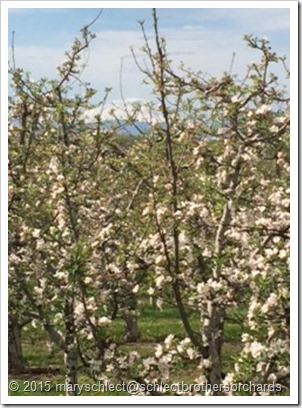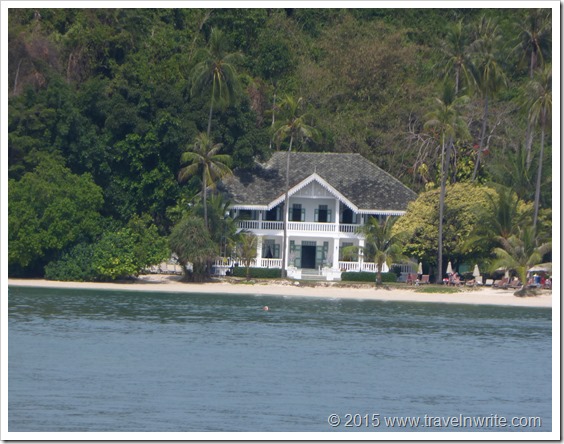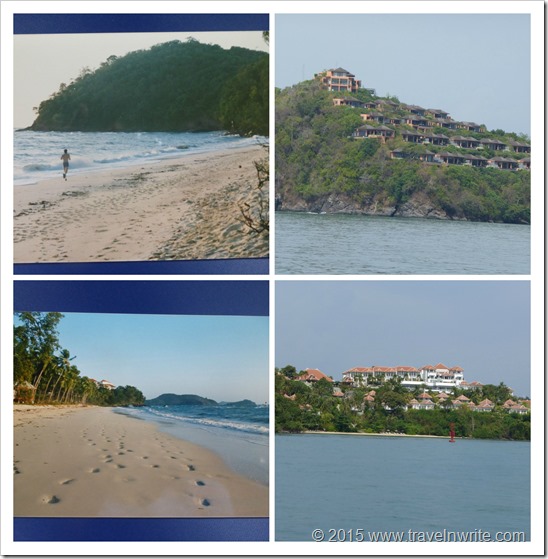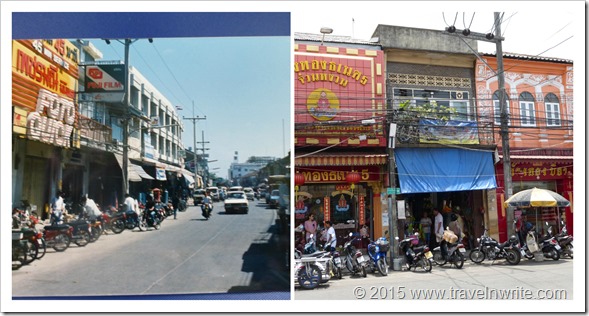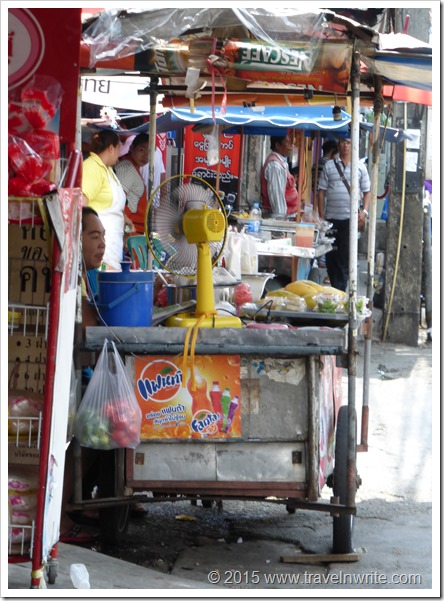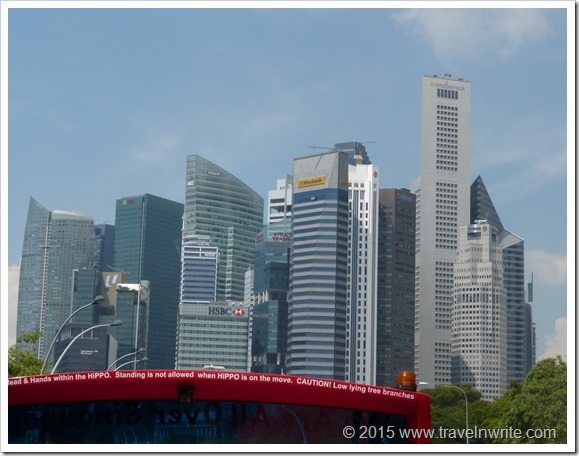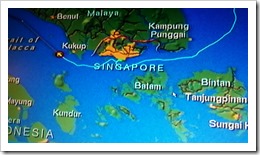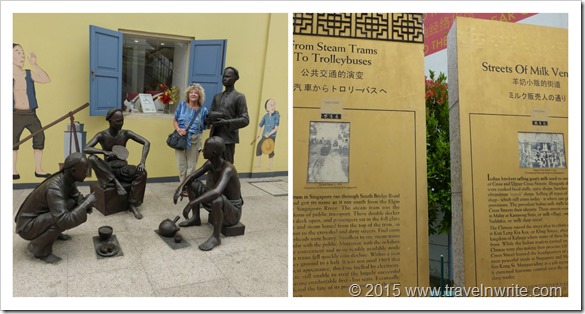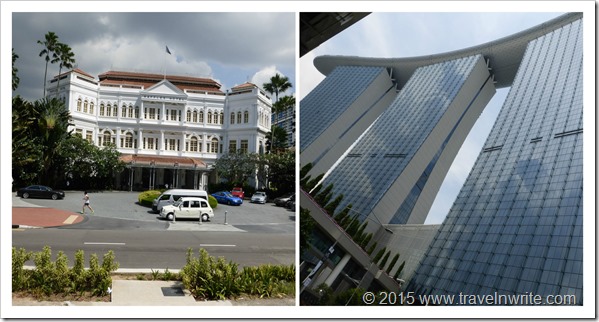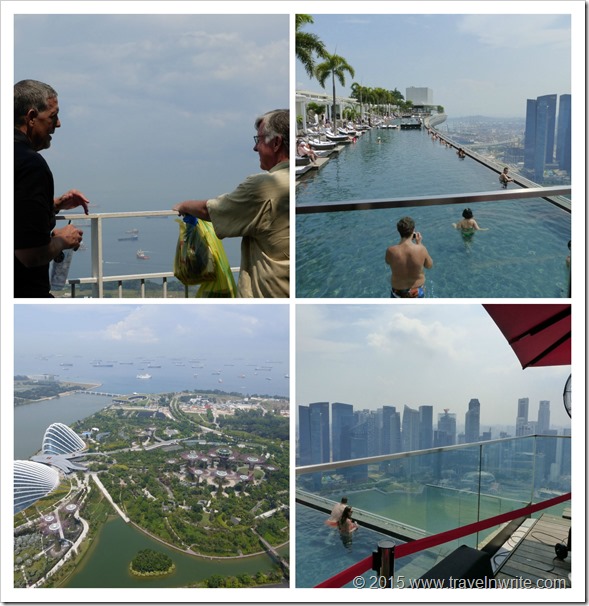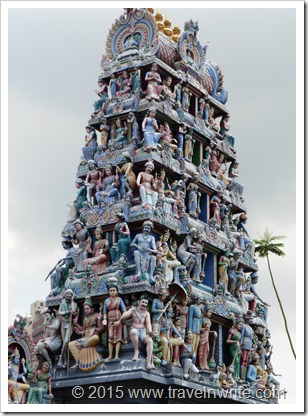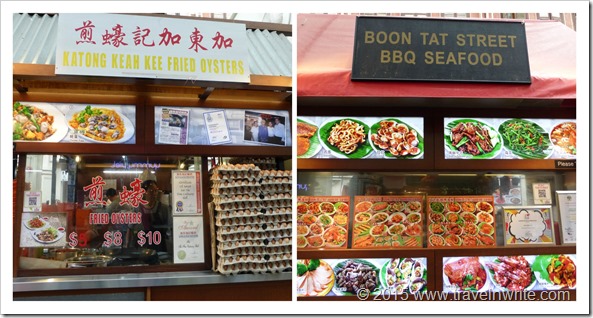“Hello!” a sweet young voice called out in perfect English.
 |
| Yangon River |
I turned to see who had issued such a cheery, understandable greeting. And then it took a minute to collect my thoughts as I couldn’t quite comprehend what I was seeing ~ the welcome had come from under the bridge pictured above.
The bridge we’d just walked across was the roof of our little greeter’s house – a wooden bridge leading to one of the docks along the murky waters of the Yangon River, some three blocks from our 5-star hotel.
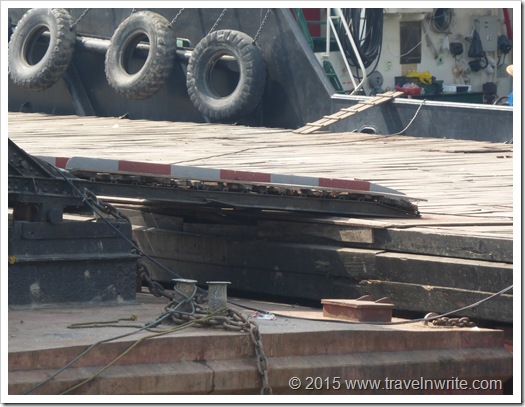 |
| Life under the bridge - Yangon, Myanmar |
In her pink dress the little one looked like a doll. Her smile was as bright as the sun, as she waved and again called out to me, “Hello!”
She was standing in a space under the bridge, (identical to the space in this nearby bridge shown in the photo above). Note: Even this shutterbug could not bring myself to take photos of my young greeter and her family.
The scene was indelibly imprinted without photos: Her mother squatted by a small cooking fire, her father was asleep on a mat and her brother played off to the side. . .in her home under the wooden bridge at the side of the murky Yangon River
 |
| Surveying life on the murky waters of the Yangon River |
I smiled, returned her greeting and we retraced our route across her roof to continue our explorations of Yangon, Myanmar – the place not so long ago know as Rangoon, Burma.
“Yangon means ‘end of strife”
We were spending three days and two nights in Yangon, Myanmar, formerly Rangoon, Burma, as part of our 34-day cruise aboard Oceania’s Nautica; a spring sailing that was taking us on a “magic carpet ride” from Bangkok, Thailand to Istanbul, Turkey.
While the Hindu and Buddhist temples and pagodas were as stunning as tourist promotional materials promised in Myanmar, it was scenes like our little greeter that left the most lasting memories during our far-too-short a stay:
 |
| Feed the Birds - that's what she cried, in Yangon, Myanmar |
. . .like the lady selling crumbs to feed the birds on the street corner.
Burma,now known as Myanmar,a British colony for nearly100 years,declared its independence in 1948. It remained a representative democracy until a military coup in 1962 initiated an isolationist policy.
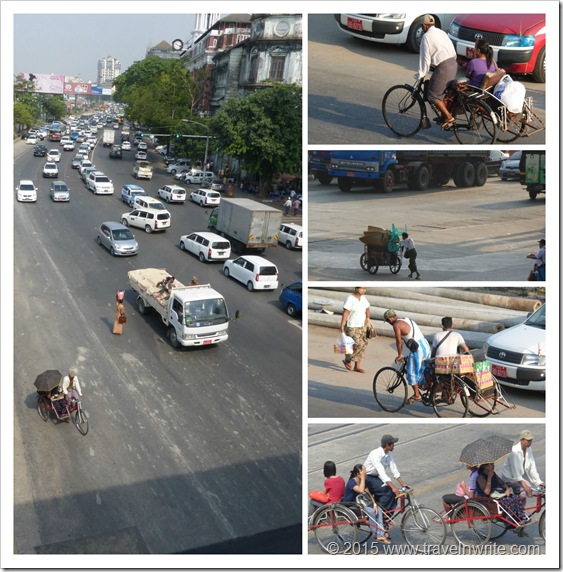 |
| Playing real-life "Chicken" in Yangon, Myanmar |
. . . or the memory of the nerve-numbing frenzied, flurry of automobiles, pedicabs, ancient buses, and pedestrians on the labyrinth of streets – requiring all who entered or tried to cross to play a game of chance, an all-too-real reality game of “Chicken”.
 |
| Yangon public buses |
From the ship’s tour desk: “Yangon has an extensive bus network, but the buses are very crowded, do not have A/C, do not always adhere to published schedules or routes and are not available at the cruise pier area.”
After seeing them, we understood the ship’s information. We weren’t inclined to climb about the buses. Walking was our preferred means of transportation during our stay. It was a great way of collecting memories. . .
From 1962 until 2011 Myanmar, formerly Burma, was ruled by a military junta. In 2011 the military introduced gradual political, economic, and foreign policy reforms.
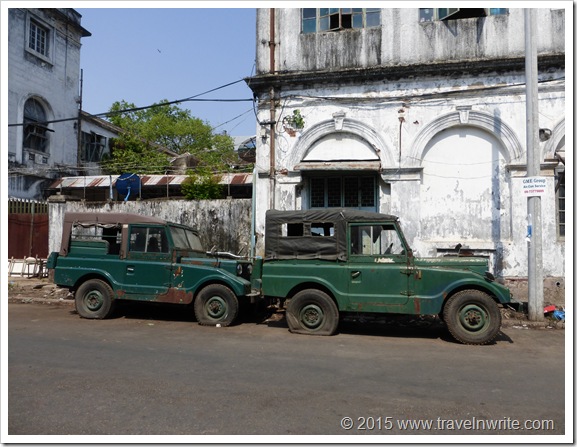 |
| Who once drove those vehicles, we wondered |
The street scenes were so varied they assaulted our senses. The vehicles pictured above we found parked mid-way between our luxurious hotel and the beautiful MahaBandoola Garden below.
Since 1948 ethnic groups –- more than 100 -- within Myanmar have been infighting – the most recent draft ceasefire agreement signed in March, 2015 – only a month prior to our arrival.
 |
| Mahabandoola Garden - Yangon, Myanmar |
As visitors we had to remember we were still on the forefront; that tourism is a new phenomenon in this city of more than five million people. Walking along streets lined with charming worn buildings that reminded us of its recent strife-filled decades.
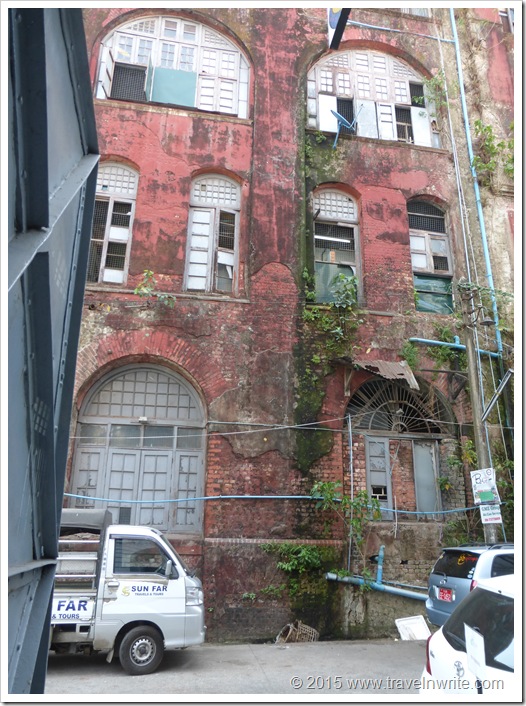 |
| What stories the buildings could tell - Yangon, Myanmar |
A tourism boycott was put into place in 1996 and lifted in 2010 when pro-democracy leader Aung San Suu Kyi (referred to here simply as, “The Lady”) was released from house arrest. In 2010 international tourists numbered 300,000; in 2012 one million.
Yet there are signs of economic growth and a renewed effort to emerge from those dark, isolated years. The photos above and below were taken within a few blocks of each other and reflect the kaleidoscope of scenes we encountered as we explored but a portion of this sprawling city.
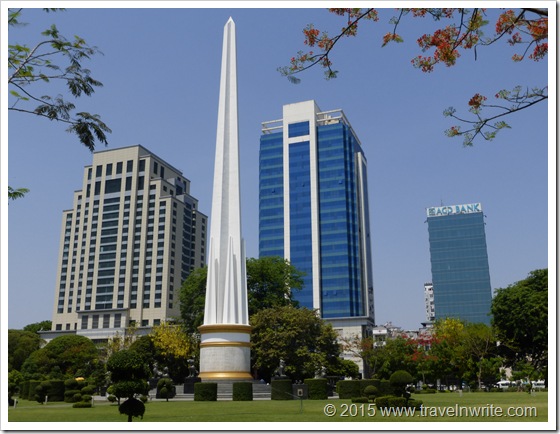 |
| Yangon, Myanmar |
In 1988 the military cracked down on protesters reportedly killing some 3,000 people and displacing thousands more.
It is easy to jump to conclusions about a place, especially when you are there for as short a time as we were. So we’d hesitate to make any grand observations about this city – for centuries a small fishing village --believed to have been founded in the 6th century.
 |
| Street eatery - Yangon, Myanmar |
We can tell you that we felt safe walking its streets; the people with whom we had contact made us feel genuinely welcomed. We did not eat or drink anything sold or available on the streets – they washed and cleaned dishes but used water that was questionable to our Western minds and stomachs.
 |
| Street cafe - Yangon, Myanmar |
Yangon has some of the most beautiful pagodas and Buddha statues in Southeast Asia. One day we’ll likely tell you about them. They were stunning, but those places get a lot of publicity. . .
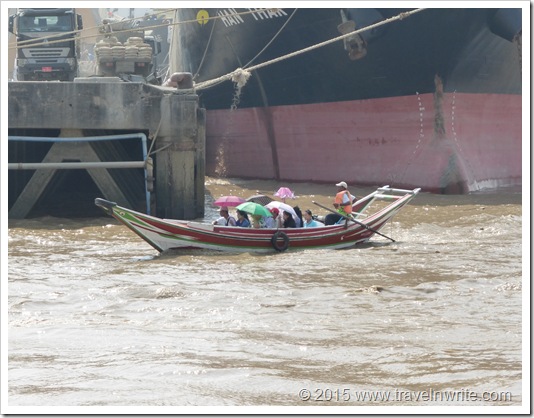 |
| Yangon River taxi |
Thanks – as always – for the time you spend with us! I had a computer melt-down this week which means the half-written post about our historic hotel stay in Yangon will come in the near future. Happy and safe travels to you until we see you again ~
If you have some time check out these collections with which we are linking this week:
Travel Photo Thursday – Budget Traveler’s Sandbox
Our World Tuesday
Travel Inspiration – Reflections En Route
Mosaic Monday – Lavender Cottage Gardening
Mersad's Through My Lens
Photo Friday - Pierced Wonderings
Wordless Wednesday


